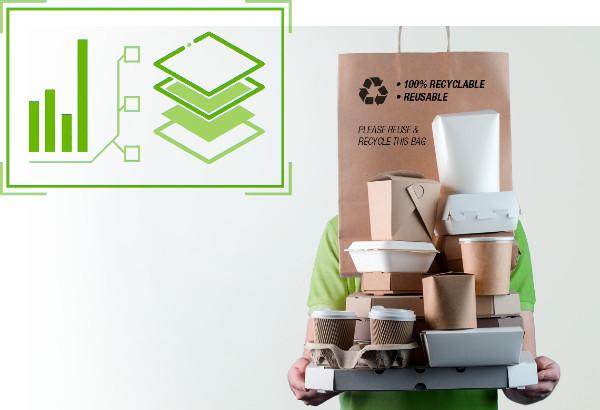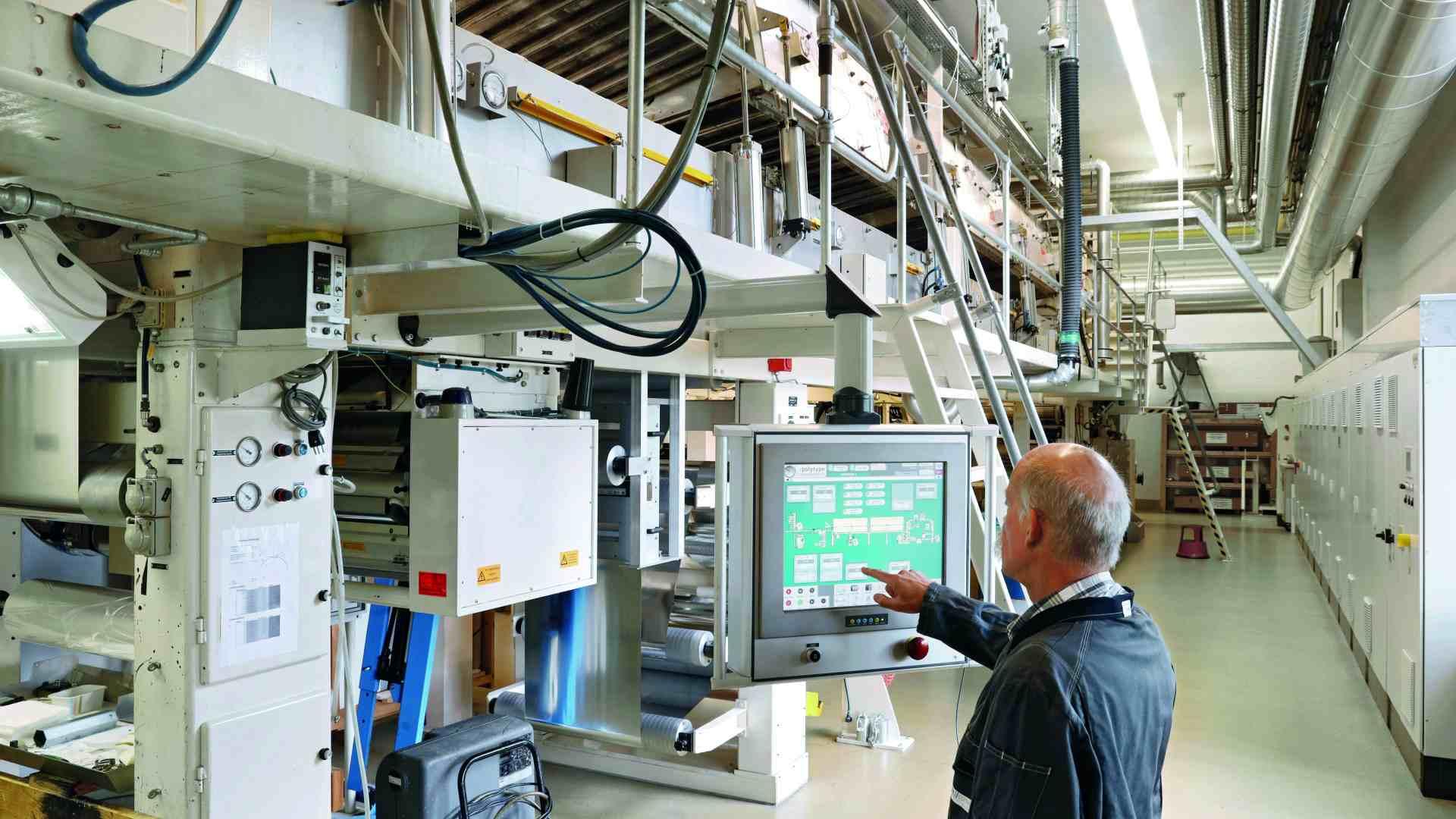touchpoint packaging at this year’s drupa is dedicated to the “future of packaging” and brings together experts from all areas of the value chain. Polytype Converting (Matthews International) will be presenting its latest developments and comprehensive support in the field of coating, which enable precise functional barrier coatings on paper substrates in R2R processing – relevant for a wide range of applications within the packaging industry. The most suitable coating method can be selected from more than 50 proven processes. Thanks to close collaborations with suppliers of high-performance barrier coatings and equipped with one of the largest in-house test capacities of the coating and converting industry, the process can be perfectly tailored to the customer’s demands and to the specific product requirements.
The megatrend of sustainability does not stop at the packaging industry. Buzzwords such as circular economy, affects of future packaging regulations and the call for innovative solutions for sustainable packaging design and production are pivotal to the current discourse. “This has already been an integral part of our corporate strategy, alongside the second megatrend New Energies,” Esa-Matti Aalto, Senior Vice President/General Manager Coating & Converting Industries, Matthews Engineering reports. “The central question, also to be discussed in the context of touchpoint packaging at drupa: Given this development, what are possible ways to make packaging, its materials, and the underlying production processes more sustainable? This is where we take a targeted approach.”
Paper is the trend for packaging
The instance that paper is gaining more and more popularity as the favoured raw material within the packaging sector is due to the increasing demand for viable alternatives to multi-layer and single-use plastics. Getting away from these materials – primarily fossil-based plastics – is sought due to complex recycling processes in the case of multi-layer substrates, and against the backdrop of regulations and initiatives aiming at strictly limiting or banning single-use plastics. On the other hand, food safety plays an important part in this development. The European food safety authority (EFSA) has set a new threshold for the tolerable weekly intake of per- and polyfluoroalkyl substances (PFAS), and the European Chemicals Agency (ECHA) has scheduled the scientific evaluation of the proposal to restrict the use of PFAS in food contact materials and packaging. In the future, guaranteeing the grease and moisture-resistant properties of food packaging must be achieved by other means that do not expose consumers to any potential harm.
Barrier coatings on paper offer a number of advantages
The good news is there are ways to meet all common requirements of the industry without resorting to multi-layer and single use plastics or applying substances containing PFAS – while at the same time enabling competitive and cost-efficient production. This is the point where functional barrier coatings on paper come into play. The use of paper for packaging purposes offers several benefits:
Paper production is based on renewable raw materials, and allows movement toward a circular economy as paper packaging is considered a mono-material that can be fed directly back into the recycling process. The high-quality look and feel of the packaging – one of the decisive criteria at the point of sale – is guaranteed by the high-grade appearance of the printed outside, while functional coatings on the inside, or in some cases on both sides, ensure excellent barrier properties. Depending on the respective product, the focus may be on a variety of specific requirements. It might be impermeability to external influences such as moisture and oxygen ingress to provide for a longer shelf life of the content. Other packaging applications require a highly effective barrier against the permeation of flavors, grease, oil, or liquids – just think of take-away food and the classic cup of coffee for take away. It goes without saying that this type of coating must also be suitable for direct food contact.
Furthermore, in production, functional aspects come into play: Is the barrier property also retained in the fold? Is sealability given? Does the packaging have a good openability? Can it be easily reclosed? In all these areas, paper-based packaging products with appropriate functional barrier coating properties can easily keep up with plastic products – in addition to offering the advantages mentioned above.

Barrier coatings perfectly tailored to the product
Polytype Converting offers customised, product-specific solutions for barrier coatings on paper substrates that meet all the industry’s requirements for packaging products. In close cooperation with manufacturers of high-performance barrier coating solutions and with more than 50 proven processes in the field of coating (including mass supply systems with degassing of foam-sensitive coating solutions), with energy-saving and pinpoint drying that is gentle on the product, as well as dedicated remoistening systems for moisture profile correction and for improved lay flat of the paper before rewinding – without impairing the barrier properties – the company offers a broad portfolio for the efficient processing of paper-based packaging substrates.
With the comprehensive facilities of the technical competence centers in Bocholt (GER) and Fribourg (CH), customers gain access to one of the largest test capacities for coating trials in the converting industry. “In targeted coating trials, we develop individual and customised product results together with partners, providers of coating media and our customers,” explains Markus Schlütter, Senior Sales Manager Coating & Converting/Industrial Applications, Matthews Engineering, and adds, “The trials take place under realistic process conditions, allowing to transfer results 1:1 to the final production method.” The exact design of dryers is achieved by precise simulations of the drying process, supplemented by tests in the technical competence centers. This approach results in the best possible coating and drying technologies that can be readily transferred from laboratory scale to a sustainable production process.
Choice of precision coating technologies
Thanks to decades of experience in special machine construction and underpinned by the customised test results, the production machines are designed for maximum precision and efficiency. With working widths of up to 3,000mm, web speeds over 1,000m/min can be achieved; the process control can be monitored via a closed loop measurement and control system. Coating weights can be adjusted depending on the required barrier level. What all processes have in common is that the preparation of the coating media pays close attention to its special rheological characteristics, and the metering of the liquid coating solution to the coating head prevents foaming effects and air inclusions, to achieve the highest surface qualities.
For functional barrier coatings on paper-based substrates, Polytype Converting offers technologies based on the process of reverse gravure roll coating, and – among others – makes use of a proven pressurized chamber doctor blade system: The so-called Pressurized Gravure System (PGS) is a modular system, in which the coating module is available both as stationery unit and as flexible trolley. Its design allows for single-sided as well as for double-sided coating in one pass in different wet coating thicknesses, which for the PGS coating module typically reach 3 to 50gsm, while allowing for coating speeds up to 600m/min – in certain cases even up to 1,000m/min. With the exact same module, a wet coat weight variation of approx. ± 20% can be reached with minimal efforts: Simply by varying the pressure inside the chamber and adjusting the relative roller speed; a gravure roller change is not required. One more thing to be considered: Because chemical defoamers as additives could adversely affect the barrier properties, the company also recommends installing an appropriate defoaming system in the backflow to avoid air entrainment into the coating head, and also offers solutions for this part of the process.
Several pre-metered die coating methods can be found in the portfolio of Polytype Converting as well. Both slot die coating and slide curtain coating processes are suitable for functional barrier coatings on paper, with wet coating thicknesses of 10 to 500gsm and coating speeds up to 2,000m/min. What is special to the latter: Besides single sided coating, the slide curtain method also offers the possibility of simultaneous multi-layer coating, and thus to apply several functional coating layers in a single pass. This way, the barrier properties can be optimized by matching them even more exactly to the latter packaging product’s function. Handling is easy and bears several advantages, as the process is not impaired neither by misting effects nor by excess fluid in the backflow, resulting in a superior film thickness uniformity (less than ±1% in cross and length profile) with virtually no coating defects – just to name some of the key benefits.
Is there a future for paper-based packaging?
Despite providing an alternative to single-use and multi-layer plastics and avoiding the use of PFAS-containing substances – Are barrier coatings on paper just a passing trend? “I can answer this question with a clear no. We receive an enormous response and with Polytype Converting we experience an increasing demand for innovative coating solutions in the field of functional barrier coatings on paper substrates,” Esa-Matti Aalto explains. “We offer customers comprehensive support in positioning themselves ideally for future challenges in the packaging sector.” Customised solutions to efficiently produce paper-based packaging are developed in close coordination between individual customer requirements, in collaboration with the respective manufacturer of the coating medium and Polytype Converting as special machine manufacturer for optimally designed production systems. As the two test centers lie in the heart of Europe (situated in Bocholt, Germany and Fribourg, Switzerland), Polytype Converting is ideally positioned – even in the geographical sense.
https://www.polytype-converting.com
Caption: In the technical competence centres (here: Fribourg, Swiss), Polytpye Converting offers one of the largest test capacities of the industry with over 50 different coating processes

